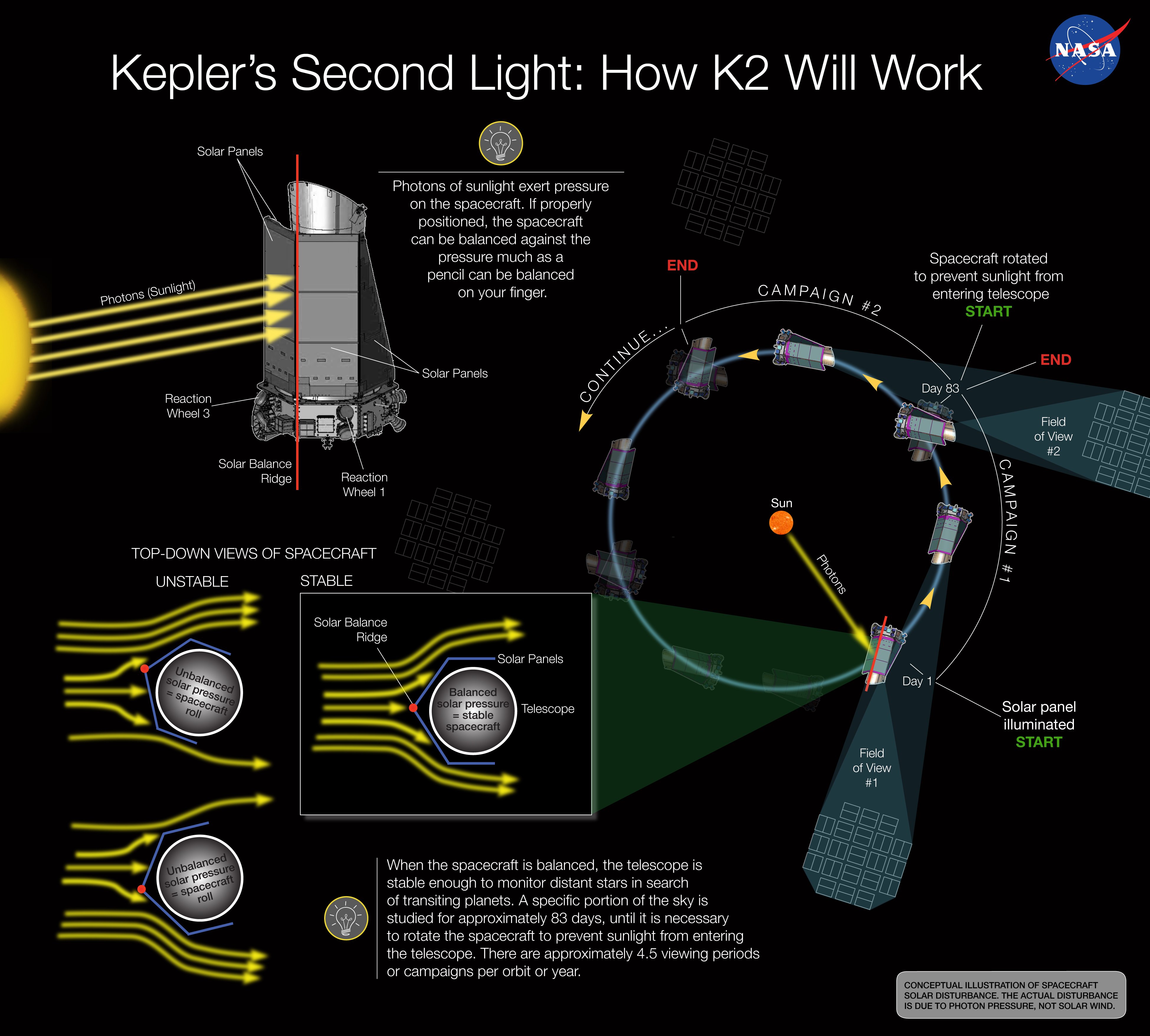Information from the NASA K2 mission has given an international team of scientists the data they need to confirm the existence of almost 100 new planets. This huge discovery brings the total number of exoplanets discovered on this mission close to 300.
U.S. doctoral student Andrew Mayo at the National Space Institute at the Technical University of Denmark elaborated on the findings, stating, “We started out analyzing 275 candidates, of which 149 were validated as real exoplanets. In turn, 95 of these planets have proved to be new discoveries…This research has been underway since the first K2 release in 2014.
Mayo’s research was actually conducted partly as a senior project during his undergraduate studies at Harvard College. The research has since expanded to include international collaboration with institutions like NASA, Caltech, The University of Copenhagen, UC Berkeley, and the University of Tokyo.
The original Kepler spacecraft was launched in 2009 to hunt for exoplanets in a single area of the sky, but it dealt with technical issues which left the telescope out of commission. However, a collaboration between astronomers and engineers resulted in the ability to repurpose and save the telescope by changing its field of view at regular intervals. This ability to salvage the telescope allowed for the launch of the K2 mission which recently discovered 100 new planets.
The 100 new planets were discovered by registering the dips in light caused when the planets cross in front of the host star. The dips indicate that the planets exist, which then must be examined more closely in order to determine whether they are, in fact, a planet. These 100 new planets add to the nearly 3600 exoplanets that have been discovered since the first planet orbiting a star similar to our own was discovered back in 1995.
Mayo has stated that it’s difficult to determine if these 100 new planets were actually planets, saying, “We found that some of the signals were caused by multiple star systems or noise from the spacecraft. But we also detected planets that range from sub Earth-sized to the size of Jupiter and larger.”
One of the 100 new planets in particular was orbiting a very bright star, Mayo reports. “We validated a planet on a 10-day orbit around a star called HD 212657, which is now the brightest star found by either the Kepler or K2 missions to hold a validated planet. Planets around bright stars are important because astronomers can learn a lot about them from ground based observatories.”
Mayo and his team are understandably excited about the discovery of these 100 new planets and their implications for the future of the field.
“Exoplanets are a very exciting field of space science. As more planets are discovered, astronomers will develop a much better picture of the nature of exoplanets which in turn will allow us to place our own solar system into a galactic context.”
These 100 new planets are just one of the contributions we’ve seen from the Kepler space telescope since its original launch. During the first mission and following K2 project, the Kepler telescope has provided over 5100 exoplanet candidates that warrant further study. While many of these planets didn’t turn out to be planets after all, we’ve still discovered a huge amount of new exoplanets that expand our understanding of the observable universe.
Hopefully, with the launch of new space missions in the near future, we’ll be able to determine if any of the Earth-sized planets might be capable of supporting life. Until then, we can be content with the exciting discovery of 100 new planets – another success from the prolific K2 mission.





